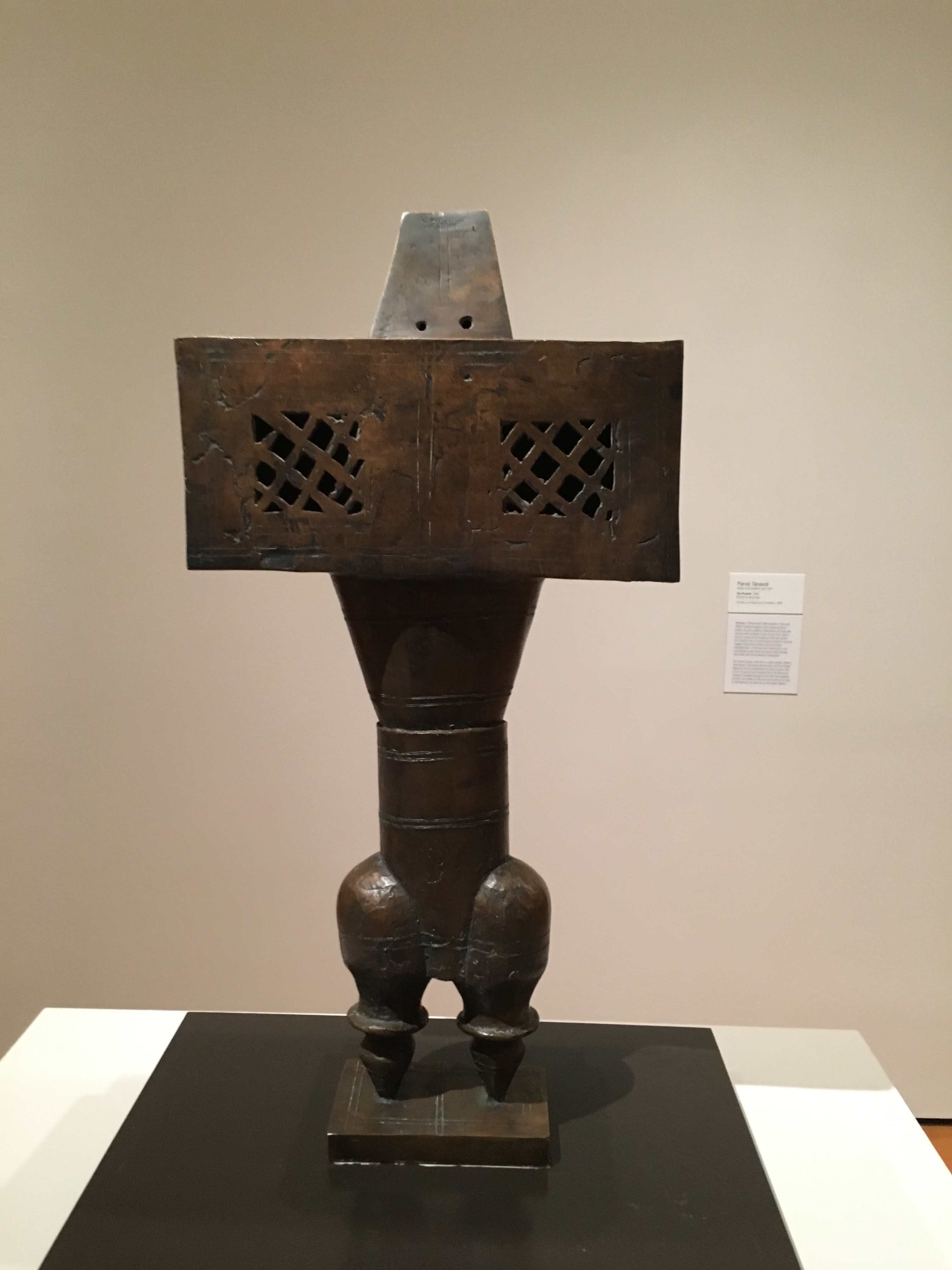Can President Trump act like a king by rewriting US immigration law through the invocation of INA 212(f)? Although America shrugged itself from the yoke of King George III in 1776, Trump issued a Proclamation on October 4, 2019 in total disregard of a Congressional statute – defining who is likely to become a public charge – that would bar intending immigrants from the United States if they do not have health insurance lined up within 30 days of their admission. A federal court in Oregon in Doe v. Trump issued a Temporary Restraining Order on November 2, 2019, one day before the Proclamation was to take effect. Although the TRO is only valid for 28 days, it is still a significant victory in the opening salvo of yet another challenge to thwart Trump’s ability to rewrite large swaths of the Immigration and Nationality Act.
While INA § 212(f) does give extraordinary power to a president, Trump has tried to use his powers beyond what could have been imagined when Congress enacted this provision. INA §212(f) states:
Whenever the President finds that the entry of any aliens or of any class of aliens into the United States would be detrimental to the interests of the United States, he may by proclamation, and for such period as he shall deem necessary, suspend the entry of all aliens or any class of aliens as immigrants or nonimmigrants, or impose on the entry of aliens or any class of aliens as immigrants or nonimmigrants, or impose on the entry of aliens any restrictions he may deem to be appropriate
Trump soon after becoming president invoked INA § 212(f) through presidential proclamations to impose his travel ban against nationals of mainly Muslim countries. This was done to fulfill a campaign promise to impose a ban on Muslims, which is also why it is known as a Muslim ban. He decided without foundation that the entry of Iranian nationals (one of the countries subject to the ban) would be detrimental to the interests of the United States even though they came to marry a US citizen or visit relatives. The Supreme Court, disappointingly, upheld the third version of the ban in Trump v. Hawaii in June 2018 stating that INA § 212(f) “exudes deference to the President” and thus empowers him to deny entry of noncitizens if he determines that allowing entry “would be detrimental to the interests of the United States.” One should still give credit to prior lower federal court decisions that blocked the first and second versions of the travel ban, on the grounds that Trump exceeded INA 212(f), which were far worse than the watered down third version that was finally upheld.
Trump got more emboldened. On November 9, 2018, he issued another proclamation invoking INA § 212(f), which banned people who cross the Southern border outside a designated port of entry from applying for asylum in the United States. The Department of Justice and Department of Homeland Security followed by jointly issuing a rule implementing the proclamation. The key issue is whether INA § 212(f) allowed a president like Trump with authoritarian impulses to override entire visa categories or change the US asylum system? INA § 208(a)(1) categorically allows any alien who is physically present in the United States to apply for asylum regardless of his or her manner of arrival in the United States “whether or not at a designated port of arrival.” Trump attempted to change that by virtue of the authority given to him in INA § 212(f) by not allowing people who cross outside a port of entry from applying for asylum. Never mind that the administration had virtually closed the designated ports of entry for asylum seekers, which forced them to cross the border through irregular methods. In East Bay Sanctuary Covenant v. Trump, 932 F.3d 742 (2018), the Ninth Circuit concluded that the Trump administration had unlawfully done what the “Executive cannot do directly; amend the INA”. Indeed, even in Trump v. Hawaii, the administration successfully argued that INA § 212(f) only supplanted other provisions that allowed the administration to bar aliens from entering the United States, but did not expressly override statutory provisions. Thus, INA § 212(f) could not be used as a justification to override INA § 208. Although the Supreme Court has temporarily blocked East Bay Sanctuary Covenant from taking effect until the government’s appeal in the Ninth Circuit and Supreme Court is decided, Supreme Court has not passed any judgment on the merits of the case.
On October 3, 2019, Trump yet again invoked INA §212 (f) by issuing a Proclamation to ban intending immigrants from entering the United States if they did not have health insurance within 30 days of their arrival in the United States. Under the Proclamation, an intending immigrant who has satisfied all statutory requirements set out in the INA will nevertheless be permanently barred from entering the United States if that person cannot show, to the satisfaction of a consular officer, that he or she either “will be covered by approved health insurance” within 30 days of entering the United States, or “possesses the financial resources to pay for reasonably foreseeable medical costs.” Except for certain special Immigrant Visa applicants specifically from Iraq and Afghanistan, and unaccompanied biological and adopted children, the Proclamation will be applied to all intending immigrants. The Proclamation, which was to take effect on November 3, 2019, was expected to affect nearly two-thirds of all legal immigrants, with a disproportionate impact on immigrants from Latin America, Africa, and Asia.
The Proclamation provides eight specific types of “approved health insurance” for an intending immigrant: (1) an employer-sponsored plan; (2) an “unsubsidized health plan offered in the individual market within a State;” (3) a short-term limited duration insurance (“STLDI”) plan “effective for a minimum of 364 days;” (4) a catastrophic plan; (5) a family member’s plan; (6) TRICARE and similar plans made available to the U.S. military; (7) a visitor health insurance plan “that provides adequate coverage for medical care for a minimum of 364 days;” and (8) Medicare. A prospective immigrant may also obtain a “health plan that provides adequate coverage for medical care as determined by the Secretary of Health and Human Services or his designee,” but the Proclamation provides no guidance as to how “adequate coverage” is defined.
The Proclamation excludes from the scope of “approved health insurance” any “subsidized” healthcare offered in the individual market within a State under the Affordable Care Act, as well as Medicaid for individuals over 18 years of age, even though some states have chosen to make Medicaid available to certain adults over 18 years of age, including certain new and recently arrived immigrants. The Proclamation relies on a single dispositive factor—the health care insurance status of an individual—to determine whether the individual will “financially burden” the United States. It is designed to exclude a large number of otherwise qualified immigrants because in reality only an STDI plan and a visitor health insurance plan would be available to one who has yet to enter the United States. Even if such plans were available, they would exclude people with preexisting conditions and would not have the essential health benefits as required under the ACA to which a new immigrant could access, but which would not qualify under the Proclamation.
Based on the likelihood of success on the merits standard that applicable for the grant of a TRO, Judge Michael Simon in Doe v. Trump found that the Proclamation’s reliance on the health care insurance status of an individual as the sole factor for determining inadmissibility as a public charge conflicted with INA § 212(a)(4) in at least five ways.
First, Congress in INA §212(a)(4)(A) has spoken directly to the circumstances in which an individual may be deemed to become a “financial burden” to the United States and has rejected the Proclamation’s core premise of lack of health insurance being the sole factor. This provision states that “[a]ny alien who, in the opinion of the consular officer at the time of application for a visa, or in the opinion of the Attorney General at the time of application for admission or adjustment of status, is likely at any time to become a public charge is inadmissible.” When determining whether an individual may become a public charge, the statute enumerates the factors that are to be considered “at a minimum” to include the applicant’s age; health; family status; assets, resources, and financial status; and education and skills. The statute outlines the permissible factors in the public charge determination and nowhere mentions an individual’s health care insurance status as one of the permissible factors, according to Judge Simon. Given the statute’s enumeration of age and health, the statute’s omission of “health care insurance status” is important.
Second the statute precludes any single factor from being a dispositive factor, which requires a totality of the circumstances test to be applied. The totality of the circumstances test has long been a feature of the public charge ground even before Congress statutorily mandated it in 1996. The court in Doe v. Trump cited Matter of Perez, 15 I. & N. Dec. 136, 137 (BIA 1974) in support of the long use of the totality of circumstances test. The Proclamation, on the other hand, conflicts with the statutory text by deeming an individual to be a financial burden based solely on her health care insurance status and eschewing all the other statutory factors including, perhaps most incongruously, the health of the individual herself.
Third, the Proclamation’s dispositive reliance on health care insurance status contravenes decades of agency interpretation.
Fourth, the Proclamation’s reliance on an individual’s accessing short-term health care benefits as a reason to find the person a “financial burden” has been expressly rejected. Citing City & Cty. of San Francisco v. U.S. Citizenship & Immigration Servs., (N.D. Cal. Oct. 11, 2019) (the public charge statute has had a “longstanding allowance for short-term aid”).
Fifth, the Proclamation revives a test for financial burden—the receipt of non-cash benefits—that Congress has rejected. In 1996, Congress enacted the Illegal Immigration Reform and Immigrant Responsibility Act of 1996, Pub. L. No. 104-208, § 531, 110 Stat. 3009, 3674-75 (1996), which amended the INA by codifying five factors relevant to a public charge determination. The Senate rejected the effort to include previously unconsidered, non-cash public benefits in the public charge test and to create a bright-line framework of considering whether the immigrant has received public benefits for an aggregate of twelve months as “too quick to label people as public charges for utilizing the same public assistance that many Americans need to get on their feet.” S. Rep. No. 104-249, at *63-64 (1996) (Senator Leahy’s remarks). Accordingly, in its final bill, Congress did not include the receipt of Medicaid, Security Income, and other means-tested public benefits as determinative of a public charge.
Based on these five reasons, the court in Doe v. Trump issued the TRO on the ground that plaintiffs were able to show a substantial likelihood of success on the merits. The court specifically relied on East Bay Sanctuary Covenant v. Trump, supra, which specifically held that a president cannot rely on INA 212(f) to amend the INA. The court also held that notwithstanding this being a presidential proclamation, it was “not in accordance with the law” under the Administrative Procedures Act, 5 U.S.C. § 706(2)(A). Further, the court also noted that the Plaintiffs have satisfied their burden of showing Defendants’ implementation of the Proclamation likely constitutes final agency action, thus akin to a final substantive rule, that is “arbitrary, capricious, [or] an abuse of discretion.” While the government has yet to submit arguments, and another hearing is scheduled shortly, it is remarkable that once again a court has struck down Trump’s use of INA §212(f) to rewrite the immigration law. In the instant case, Trump has undermined provisions that Congress has specifically enacted to determine who is likely to become a public charge. If courts do not check the president’s use of INA §212(f) to issue policies that reflect his racist views, there will be no limit with what Trump can do with our immigration laws without having to go through Congress to change them, or even issuing regulations under the Administrative Procedures Act.
There are other arguments that can be advanced to show how utterly incompatible the Proclamation is to specific provisions of the INA. The Proclamation would also bar immigrants based on approved self-petitions under the Violence Against Women Act. Congress specifically indicated that VAWA self-petitioners will be excepted from the public charge requirements in INA 212(a)(4)(A)-(C). How can the Proclamation override these provisions in the INA that created an exception for VAWA petitioners and require them to have health insurance?
In addition, the Proclamation is also a gross violation of the APA as the Proclamation is ultra vires of the INA. This argument can be further bolstered if the court considers Justice Robert’s invocation of Justice Friendly in the census case, Department of Commerce v. New York, favoring judicial review of executive actions:
Our review is deferential, but we are “not required to exhibit a naiveté from which ordinary citizens are free.” United States v. Stanchich, 550 F. 2d 1294, 1300 (CA2 1977) (Friendly, J.). The reasoned explanation requirement of administrative law, after all, is meant to ensure that agencies offer genuine justifications for important decisions, reasons that can be scrutinized by courts and the interested public. Accepting contrived reasons would defeat the purpose of the enterprise. If judicial review is to be more than an empty ritual, it must demand something better than the explanation offered for the action taken in this case.
Furthermore, a presidential executive order cannot supersede a law previously passed by Congress. A case in point is Chamber of Commerce v. Reich, 74 F.3d 1322 (1996) which held that a 1995 executive order of President Clinton violated a provision of the National Labor Relations Act. President Clinton’s EO No. 12, 954 declared federal agencies shall not contract with employers that permanently replace lawfully striking employees. The lower district court held that the president’s interpretation of a statute was entitled to deference under Chevron U.S.A. Inc. v. NRDC, 467 U.S. 837 (1984). The DC Court of Appeals, however, overruled the district court, without explicitly stating whether the president’s interpretation was entitled to Chevron deference or not.
It is also no secret that the Proclamation is designed to exclude immigrants from poorer countries from Latin America, Asia and Africa, which Trump has derided as “shithole countries.” The President’s derisive language towards Muslims was successfully used against him in the Fourth Circuit decision in IRAP v. Trump, to demonstrate that the Muslim ban violated the Establishment Clause of the US Constitution. It has also been used against him in litigation opposing the termination of Temporary Protected Status. Although the Supreme Court did not consider violation of the Establishment Clause argument, it does not mean that plaintiffs cannot pursue constitutional arguments in Doe v. Trump. Here, the Proclamation has violated the Equal Protection Clause as it discriminates against immigrants from poorer countries who will not be able to afford the health insurance or will be forced to buy substandard insurance plans. The healthcare exchanges under the Affordable Care Act clearly allows a new immigrant to buy into a subsidized healthcare plan, which they cannot decline under a particular income level. This is inconsistent with the statutory and regulatory structure that directs a lawful permanent resident to do so under the ACA.
The American Immigration Lawyers Association along with a coalition of civil rights groups under Latino Network inspired the lawsuit, which makes me feel proud to be a member of AILA and especially AILA’s Administrative Litigation Task Force. We have a long road ahead as the government will respond with arguments in favor of presidential power, but now is the time to make the most compelling arguments to stop a president like Trump from invoking INA § 212(f) to rewrite immigration law in a way that is both inconsistent with the INA and with the foundational principle of America being a nation of immigrants.









